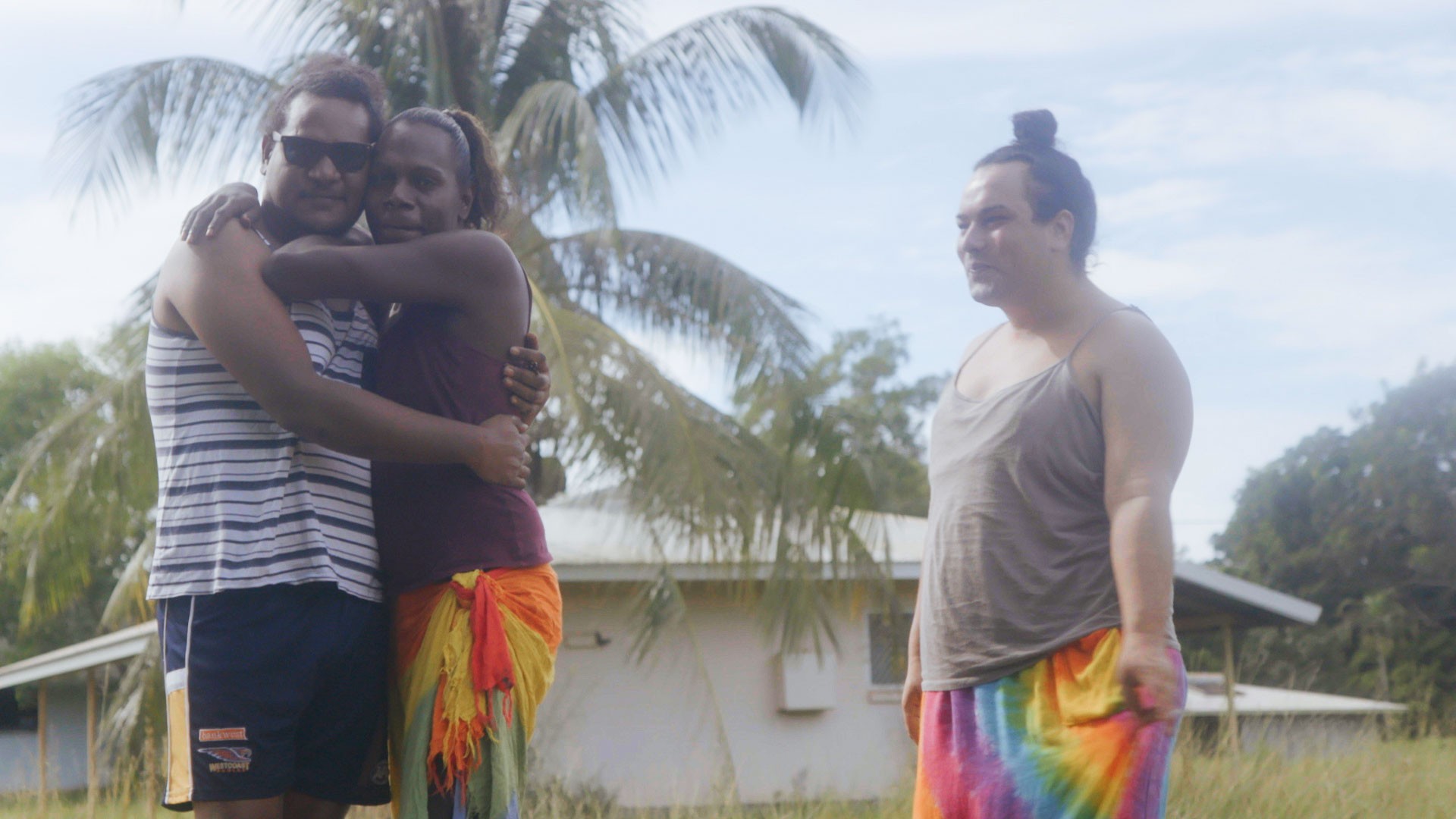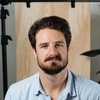Alice Springs. The red centre. Days from beaches or any buildings higher than three stories. Remote, ancient, silent as the ocean at night. The quintessential Aussie outback and yet also, surprisingly, the nation’s rural LGBTIQ capital. Particularly for women.Alice Springs has one of the highest numbers of female same-sex couples in the country. According to the 2016 census, one in 100 of all couples in town are women, giving it a similar profile to the far smaller town of Daylesford in Victoria. Men in same sex relationships number about half as many—along with a smaller tally of people who identify as trans and intersex—yet as a whole the region has an openness and diversity that makes it unique for the nation’s interior.
Advertisement
Lewis Young
“I had no idea what to expect,” admits Lewis Young (pictured in the blond wig) of his first visit two years back. "I just booked flights with another friend and we came up for about five days and I was absolutely blown away.”
Lewis describes stumbling upon a community of artists who’d left cities for the desert and he began to consider doing the same. “The town was just so diverse that I felt like I’d arrived in this rainbow bubble,” he says. “There was every different culture, sexuality, and gender imaginable, which I didn’t expect because it’s so small.”
Lewis moved to Alice Springs in 2016, arriving at a similar time to Tom O'Connell (pictured in the red top) who’d permanently relocated from regional Victoria. The two of them became friends and organised a pride event for the 2017 plebiscite, in which they debuted in drag for the first time. Since then Tom has continued organising queer events around town and occasionally performing.
“I think some people are still a bit taken aback by drag queens, especially in more remote places,” Tom explains. “But Alice Springs is just far more progressive than most people are led to believe."
Tom O'Connell
But for the first century of European occupation, few people would have described Alice Springs as “progressive.” By all accounts it was a rough colonial outpost, carved out of land that had belonged to the Arrernte people for at least 30,000 years. They'd referred to the region around the MacDonnell Ranges as “Mparntwe,” a name that was completely ignored in 1888 when a spot by the Todd River was surveyed and named “Stuart,” and then again in 1933 when the burgeoning town was renamed “Alice Springs.”
Advertisement
For most of the 20th century Alice Springs' colonial population was overwhelmingly white, male, and often employed in mining or defence. It wasn’t until the 70s that a new military base spun the town in an unexpected direction by attracting the ire of the protest movement, and drew waves of young, politically progressive people from the cities. So in a way that no one foresaw, Australia’s participation in the Cold War affected the social fabric of Alice Springs.
The shift officially began in 1970 when a “Joint Defence Space Research Facility” was opened 18 kilometers from the town’s centre. Essentially a giant field of mysterious domes and dishes secured by cyclone fencing, the base was called “Pine Gap,” and was a collaboration by Australian and US spy agencies (notably the CIA) to track and analyse satellite communications from around the world. The location, it emerged, was ideal because intercontinental nuclear missiles at the time had insufficient range to strike inland Australia.
From then on, anyone concerned about the nuclear arms race or angry about bloodshed in Vietnam looked to Pine Gap as Australia's physical embodiment of the Cold War. And so Alice Springs began to attract protesters—which often inadvertently meant young free-thinking members of the nation’s LGBTIQ communities.
By 1983 this agitation coalesced around nuclear disarmament, and Alice became the site for Australia’s incarnation of the “Peace Camp” movement. That year Indigenous leaders led around 700 women to a Peace Camp held at the Pine Gap gates. Many of them had traveled specifically for the protest and remained there for two weeks as part of a global action. And when the protest ended, many of the women stayed, which had a fairly notable effect on the town’s then-population of 17,000.
Advertisement
“It didn’t just attract lesbians,” explains Carmen Robinson, a 34-year old artist and Victorian expat living in Alice. “A lot of straight women came to Pine Gap and ended up leaving as lesbians.”Carmen moved to Alice Springs seven years ago, long after the Peace Camp was dismantled, but she says she was drawn by the inclusive culture left in the protesters’ wake. And while she agrees that Pine Gap catalysed Alice Springs’ ideological transformation, she argues it also brought people who were simply passionate about minority groups, queer or otherwise.“You got the type of people who were already interested in social justice,” she says. “A lot of women came here because they were in solidarity with Aboriginal people, because they also knew what it was like to be oppressed. They came to show solidarity for other oppressed groups. There’s a sort of magic and liveliness in those circles—people who are very liberated and rebellious are more free in their sexuality.”While you're here check out our documentary on the Sistagirls of the Tiwi Islands: Last year, in an article published by the ABC, Charles Darwin University population researcher Andrew Taylor argued that these slow-moving cultural shifts in Alice Springs were finally reflected in the 2006 census.“[That] was when the gender ratio flipped from Alice Springs being male dominated—which is what you would expect from a remote, outback town,” he told the ABC. “That was reportedly due to the arrival in town of some female same-sex couples and that group have only grown over time."
Last year, in an article published by the ABC, Charles Darwin University population researcher Andrew Taylor argued that these slow-moving cultural shifts in Alice Springs were finally reflected in the 2006 census.“[That] was when the gender ratio flipped from Alice Springs being male dominated—which is what you would expect from a remote, outback town,” he told the ABC. “That was reportedly due to the arrival in town of some female same-sex couples and that group have only grown over time."

Advertisement
For him, that seemed to officiate Alice Springs' cultural transformation from military outpost to "rainbow bubble." But despite the milestone, both Lewis and Tom, as well as Carmen, all believe the town has progress left to be made. They stress the importance of further accepting and understanding Alice's intersectional communities, and underline how in many ways their own journeys have been comparatively privileged.“What I’m conscious of is that these photos portray just me and another white cis gay man,” says Tom. “But I think it's important for people to know that Alice Springs’ community is more diverse than that. There are queer individuals in Alice whose experience hasn’t been so accepted, and many of them may experience intersectionality.”Having said that, Tom is quick to reiterate his optimism about things continuing to change for the better. “Because I think that if any remote town can succeed at celebrating and supporting the LGBTIQ community, it’s definitely Alice Springs.”Words by Julian Morgans. He's on Twitter and InstagramPhotos by Genevieve WalsheAnd if you’re in Alice Springs from March 8 and want to get involved, come along to the Queen of the Desert Festival
